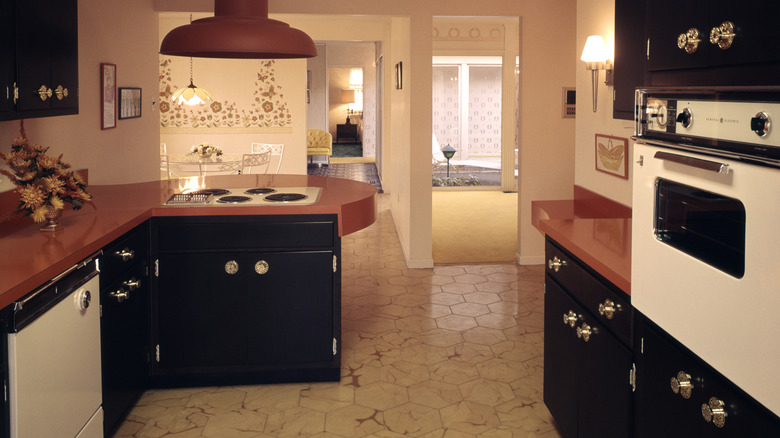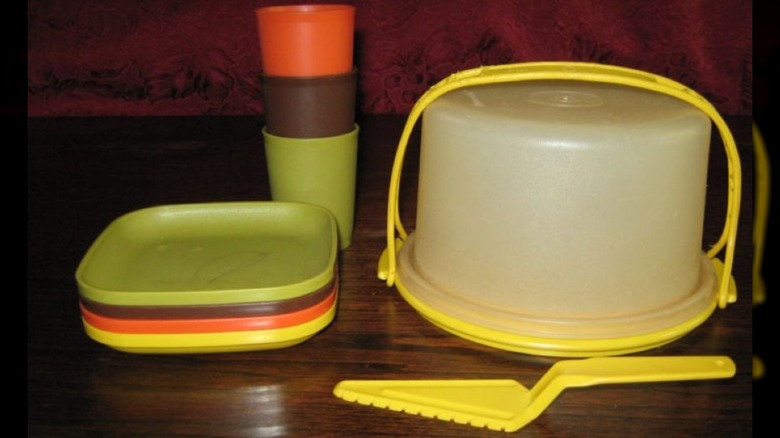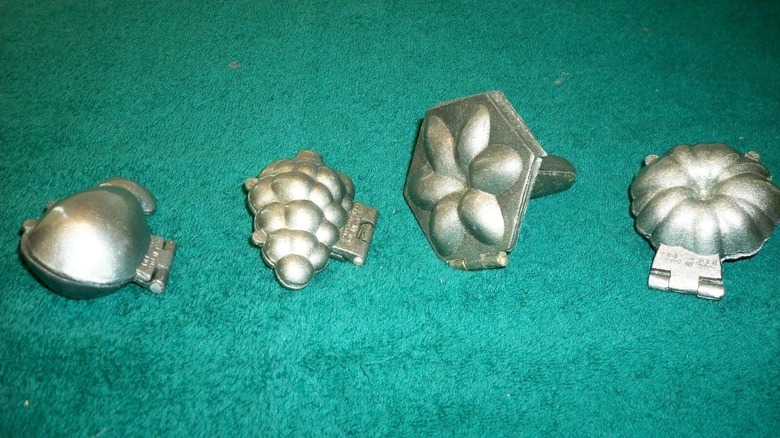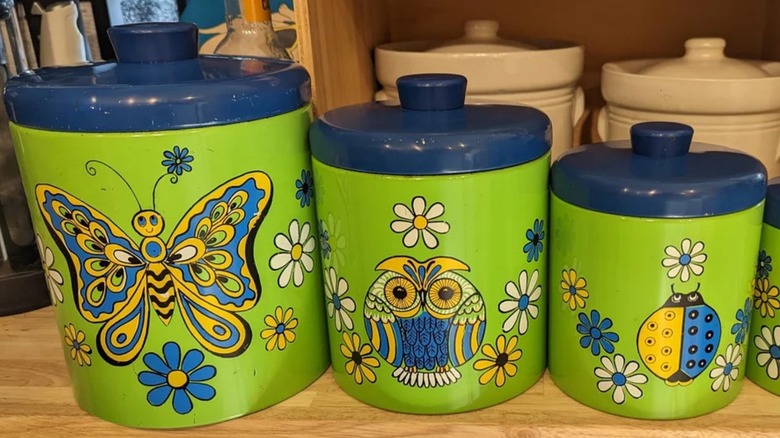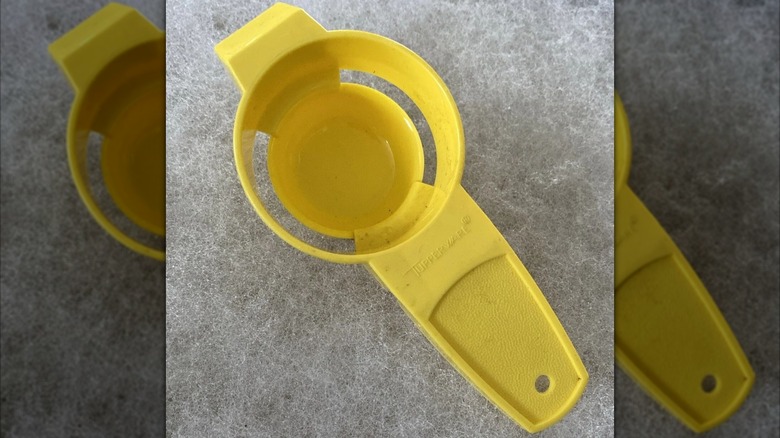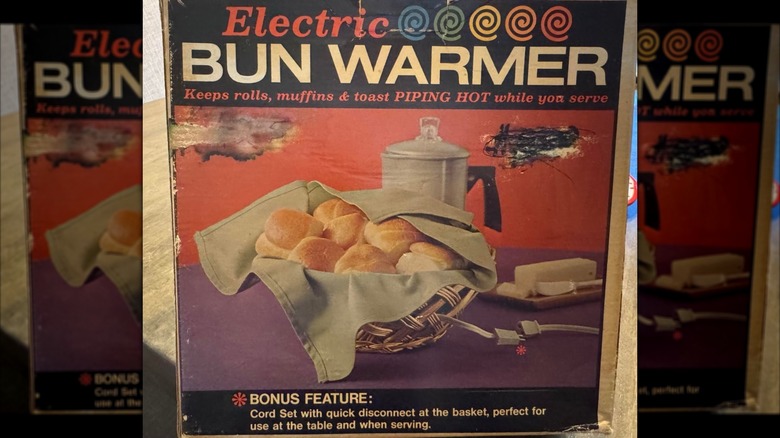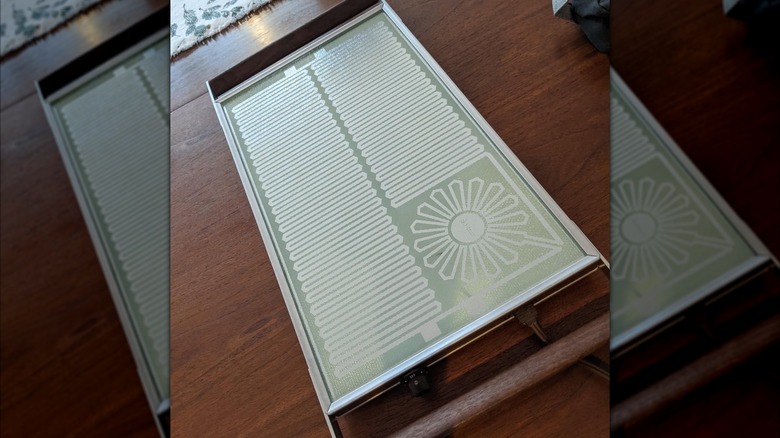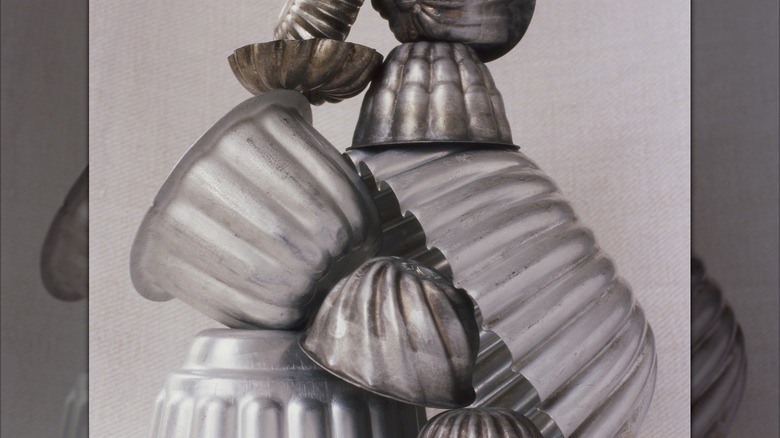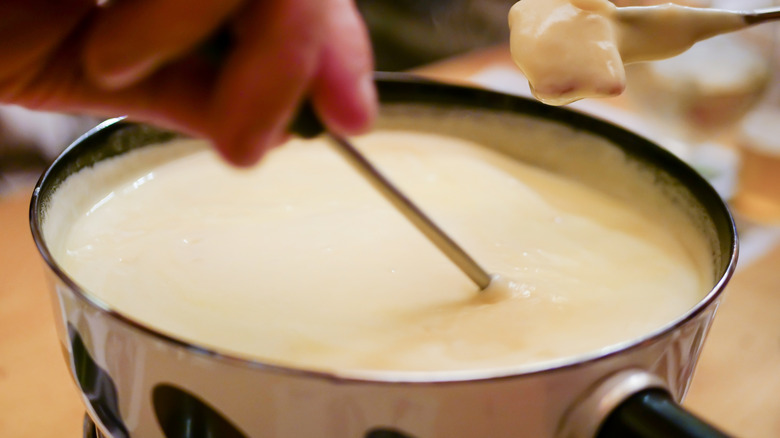8 Forgotten 1970s Kitchen Items That Deserve A Comeback
We may receive a commission on purchases made from links.
The nostalgic allure of a 1970s kitchen was undoubtedly found in its details: burnt orange and avocado green appliances, strange-but-amusing baking gadgets, Tupperware embossed with flowery scenes. Kitchens back then were more unabashedly out there, decked out with unique fixtures, stylings, and tools. The era of fondue parties and jiggling, bulbous desserts may be in the past, but that fervent energy evident in the components of a '70s kitchen is worthy of a return to your household now more than ever.
Though many of these cooking and baking items have been replaced by slicker, modern alternatives, perhaps it is time to return to the good old days of cutesy kitchens. With more than enough color and whimsy to spare, these forgotten kitchen items from the 1970s deserve a comeback for their genuine utility and vibrancy — whether they're holding your bakes, storing your dry goods, or simply keeping your buns warm.
Cake carrier
If you've ever wondered how people transported their cakes in style back in the '70s, look no further than the cake carrier. Different from a cake keeper, which stays on your table to preserve your baked goods, a cake carrier has a convenient handle so it can be picked up and toted around easily.
Though cake carriers can be dated to the Victorian age, when they were often metal and intricately designed, plastic carriers became an essential part of a 1970s Tupperware set. Metal ones were certainly still used at this time, often adorned with flowery designs that emulated the popular CorningWare kitchen line, whose vintage casserole dishes sell for thousands of dollars today. Cake carriers were an expected sight at many social gatherings back then, and are more than worth a revival today. Make a tasty old school dessert (a Bundt or icebox cake sounds good), slide it into a funky retro cake carrier, and take it to your next party to be the coolest cat in the room.
Butter molds and butter pats
One thing a home cook in the 1970s knew was how to present their butter. Using a butter mold, one would pack softened butter into an animal or flower shaped mold and turn it out onto a plate. While butter dishes are all the rage nowadays, a butter mold added a singular luscious charm to these 1970s kitchens.
Another way to present butter would be a butter pat, a small plate perfect for a pat of butter. These were a popular collector's item in the 1970s, though they originated much earlier in the century. In fact, this later period was characterized by extensive collecting of older American folk art and knick-knacks. Wooden molds were made by farmers in the 18th century, and these are a popular collectible as well. Though placing a bit of extra butter on the table is typical at home and many restaurants, it's also somewhat of a celebration, an ode to the decadence of a well-cooked meal that can always use a little extra flavor and fat. It warrants a little extra ceremony, and butter molds and pats provide just that.
Nesting canisters
It's an unfortunate fact of life that we are destined to buy more for our kitchens than we have space for. When counter space is high-value real estate, you'll need a storage solution that is as nifty as it is stylish. Luckily, the '70s have got you covered with their trademark nesting containers.
These plastic containers – some made by Tupperware crafted to fit inside of each other — were very popular and often the brightest item in a kitchen. While modern kitchen storage containers tend to be quite drab and one-note, a set nesting containers from the 1970s light up your countertop. Many are decorated with near-psychedelic art, reflecting the cultural undertones of the hippie movement. Indeed, Tupperware parties were important social get-togethers for suburban women in this period, who sold the storage bins at these shindigs. Nesting containers are worthy of a comeback in your kitchen not least for their distinctly American history, but also for their flashy style and wonderful handiness.
Tupperware egg separator
The days of countertops and hands slick with residual egg whites just because you need a few yolks are no longer: the seventies arrive once again with the solution. This egg separator eliminates the regrettable downside of getting your hands dirty when you separate some eggs. With its striking color and intuitive use, it is also a great tool to use for the promising young chef in your home. One simply cracks an egg into the device over a bowl, which collects the egg white while the yolks sit on top.
As with several items on this list, Tupperware made a popular line of egg separators that have gained new life over the past few years on popular resell websites like Etsy and eBay. This was part of a Tupperware series, a whole collection that added to the continuous fun of a kitchen in the '70s. The egg separator was a quick way to complete a menial task. It's high time we bring it back to add some color to our egg-separating.
Bun warmer
There are few dinner tragedies greater than homemade oven-fresh rolls going cold and forgotten on your dinner table. In the '70s, calamities like this were avoided with the practically-named bun warmer. A small box with a tarp tucked over it that heated up similar to an electric skillet, a bun warmer kept your buns nice and toasty on the table. It even made your buns taste just as fresh the next day. Like most things from this groovy era, the tarp was often patterned and brightly colored. In some cases, you could even design your own with cut-out patterns.
Despite the name, you could use this for more than just buns. Pancakes and eggs for breakfast, or tortillas for a taco night keep cozy in the bun warmer. An appliance like this likely went out of style when innovations in home ovens and kitchen drawers allowed for similar functions, but the charm of this nifty gadget is persistent. Perfect for entertaining guests, the bun warmer is due for a snuggly comeback.
Salton Hotray
Similar to a bun warmer, the Hotray made by Salton, a Canadian appliance company still operating today, allowed for entire meals to stay warm on the kitchen table or counter. A simple glass plate with handles, the Hotray also had certain "hot spots" for beverages that need to stay molten.
Old-school Salton products are very popular finds at thrift stores, showing the retro allure of these items are only growing more fiery. Vintage item collectors online note how hot this tray gets even all these years later, which means a piping-hot casserole will stay as such as your party goes well into the night. Some from around this time period sell for around $40, and reviews say it is more than worth the investment. This is a perfect encapsulation of old school night life at home, a sizzling glimpse into a bygone era that warrants a return to your countertop.
Jell-O molds
Nowadays, Jell-O molds seem to mostly exist as an artifact in people's minds, so it can be easy to forget that they were commonplace in a 1970s kitchen. Coffee jelly, cottage salad, and other gelatinized confections would be poured into these molds to set overnight.
In the '70s, jello molds were ubiquitous. Some nostalgic online commenters note how their parents had dozens in their kitchens back then, which means these were used to feed a crowd. You're more likely to see Jell-O molds at the end of some aspic salad recipes of yesteryear than in kitchens today, but this forgotten item deserves a comeback in your cabinet. While it may be a little too soon to say gelatin-based salads and desserts are making a major comeback, it's hard to beat the novelty when you break one out at a gathering. It can certainly be a distressing experience trying to unmold them with as much grace as possible while retaining their glossy jiggle, so you might need a useful trick to get the Jell-O out its mold.
Electric fondue set
It simply was not a kitchen in the 1970s without an electric fondue set. Fondue parties were pretty much universal in American households in the '70s, and these electric sets were tailor made for them. Since the most important part of fondue is its oozing consistency, these electric sets keep the fondue hot enough for hours so the cheese never gets chewy or cold; in other words, they are perfect for parties.
Though it has origins in Switzerland, fondue as an American dish came to be popular in '50s and '60s. Restaurants popped up all across the country that recreated the food, and from then on, a fondue set became synonymous with a spirited home. History says that Emmental, a semi-hard Swiss cheese, is considered the ultimate fondue cheese. But make no mistake: the party doesn't have to stop at cheese. Chocolate fondue is just as fitting if you're trying to recreate that '70s vibe, and you'll be ahead of the curve on the old-school dinner party trend we need to get back into.

